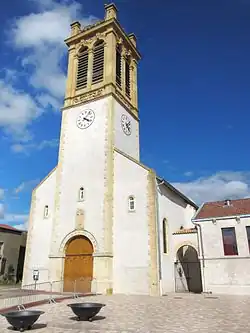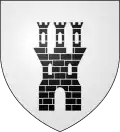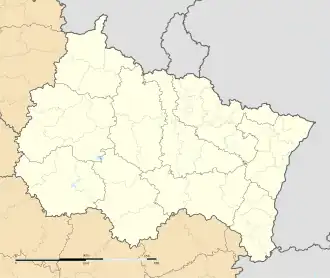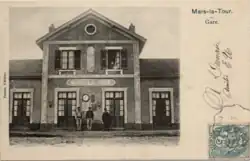Mars-la-Tour
Mars-la-Tour | |
|---|---|
 The church in Mars-la-Tour | |
 Coat of arms | |
Location of Mars-la-Tour | |
 Mars-la-Tour  Mars-la-Tour | |
| Coordinates: 49°05′59″N 5°53′12″E / 49.0997°N 5.8867°E | |
| Country | France |
| Region | Grand Est |
| Department | Meurthe-et-Moselle |
| Arrondissement | Toul |
| Canton | Jarny |
| Government | |
| • Mayor (2020–2026) | Roger dalla Costa[1] |
Area 1 | 12.64 km2 (4.88 sq mi) |
| Population (2022)[2] | 885 |
| • Density | 70/km2 (180/sq mi) |
| Time zone | UTC+01:00 (CET) |
| • Summer (DST) | UTC+02:00 (CEST) |
| INSEE/Postal code | 54353 /54800 |
| Elevation | 197–263 m (646–863 ft) (avg. 239 m or 784 ft) |
| 1 French Land Register data, which excludes lakes, ponds, glaciers > 1 km2 (0.386 sq mi or 247 acres) and river estuaries. | |
Mars-la-Tour (French pronunciation: [maʁs la tuʁ]) is a commune in the Meurthe-et-Moselle department in northeastern France.
History
The Battle of Mars-la-Tour was fought on 16 August 1870 during the Franco-Prussian War near the town of Mars-la-Tour.

The railway line between Longuyon and Pogny reached Mars-la-Tour in 1876, at which time a small train station was built.[3] On 30 August 1919 the station witnessed a minor accident when a freight train collided with a train full of coal, killing one train's conductor.[4] The station no longer exists, however.
See also
References
- ^ "Répertoire national des élus: les maires" (in French). data.gouv.fr, Plateforme ouverte des données publiques françaises. 4 May 2022.
- ^ "Populations de référence 2022" (in French). The National Institute of Statistics and Economic Studies. 19 December 2024.
- ^ Jacquin, Mars-la-Tour (série: Monographies communales de Meurthe-et-Moselle, no. 349), 1888, collection Bibliothèque municipale de Nancy, pp. 230, 232. [1]
- ^ Le Figaro du 31 août 1919, p. 2.
Wikimedia Commons has media related to Mars-la-Tour.